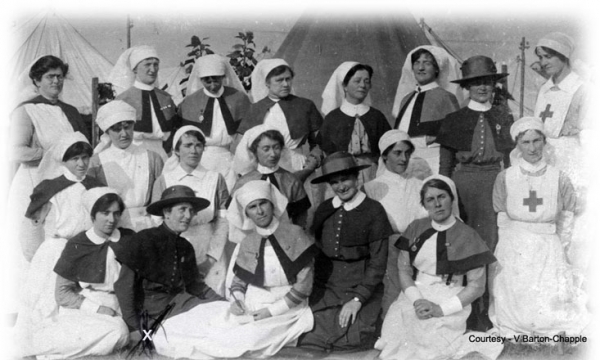As I talked about in my previous blog post, World War 1, however horrific, was a somewhat empowering time for women. In order to make a steady income while men were away at war, women had to assume traditionally male jobs. For the first time, they were able to hold power in the workforce and feel a sense of superiority. These women were incredibly strong, as they had to care for their home, family and income all at the same time with no help from their husbands. Many women also took to the front lines during the war. Thousands were enlisted as nurses in hospitals near battlefields, and had to care for the multitudes of sick and dying soldiers. They risked being bombed as well as caught in crossfire. They saw horrific wounds and pain and came face to face with death everyday. Yet they still continued to help, as they knew how crucial their work was.
Lady Liverpool was the wife of New Zealand’s governor at the time of World War 1. Just two days after the war broke out, Lady Liverpool called for New Zealand women to sew clothing and collects goods to be donated to soldiers on the front lines. Within days, hundreds of NZ women had joined her efforts. She believed that women back home should “do their bit - and knit”. While this might sound rather traditional nowadays, during the war, these small efforts were of massive help to NZ soldiers. Sewing and collecting donations for the army was the women’s way of contributing to the war from back home. They couldn’t be conscripted and go off into battle like their husbands, sons and fathers, so they did as much as they could to support their soldiers from New Zealand. Lady Liverpool encouraged thousands of New Zealand women to contribute through street collections, auctions, flower sales and carnivals (even holding the first Daffodil Day in 1915). She created a positive movement among New Zealand women that inspired many to take action in areas that they felt passionate. During a time where few women had a voice, Lady Liverpool was heard throughout New Zealand. She became the poster-girl for action and bravery throughout World War 1, remaining positive despite the treacheries that the war caused.
Meanwhile, nurse Hester Maclean was busy leading women from the New Zealand Army Nursing Service from country to country in order to assist in as many war-side hospitals as possible. In 1913, Maclean was made matron-in-chief of the NZANS, and was in charge of recruiting New Zealand’s best trained nurses to be sent away. Her leadership qualities were remarkable, even in the face of war. She was highly respected by both men and women, whereas most wartime nurses sunk into the background of war efforts.
When the war broke out, Maclean had to fight to form a military nursing service in NZ, as her efforts were simply brushed aside by officials. But through negotiation, she was able to put together a team of nurses that would represent New Zealand during the war. Maclean and her women were an army in themselves, fighting through risk of disease and death within the hospitals. Like soldiers, they could not back down when coming face to face with faith, it was their duty to continue serving New Zealand. Even when 10 NZANS nurses died in 1915 during sea transit, Maclean’s army of nurses remained strong.
Lady Liverpool and Hester Maclean fought from two different places, but they each represented and empowered New Zealand women in similar ways. Be it back home or on the battlegrounds, Liverpool and Maclean inspired women to take charge and fight for their countries in ways that soldiers could not. They were the glue that kept armies intact through years of battle. Lady Liverpool’s handknit clothing provided warmth and protection for soldiers and Maclean and her nurses aided them back to health. Either way, the lives of both of these women give us a hint at what it was like to stand brave in the face of war. Hopefully, I am able to learn the stories of more incredible WW1 women over the next few weeks. But for now, wish me luck, see you in France!

